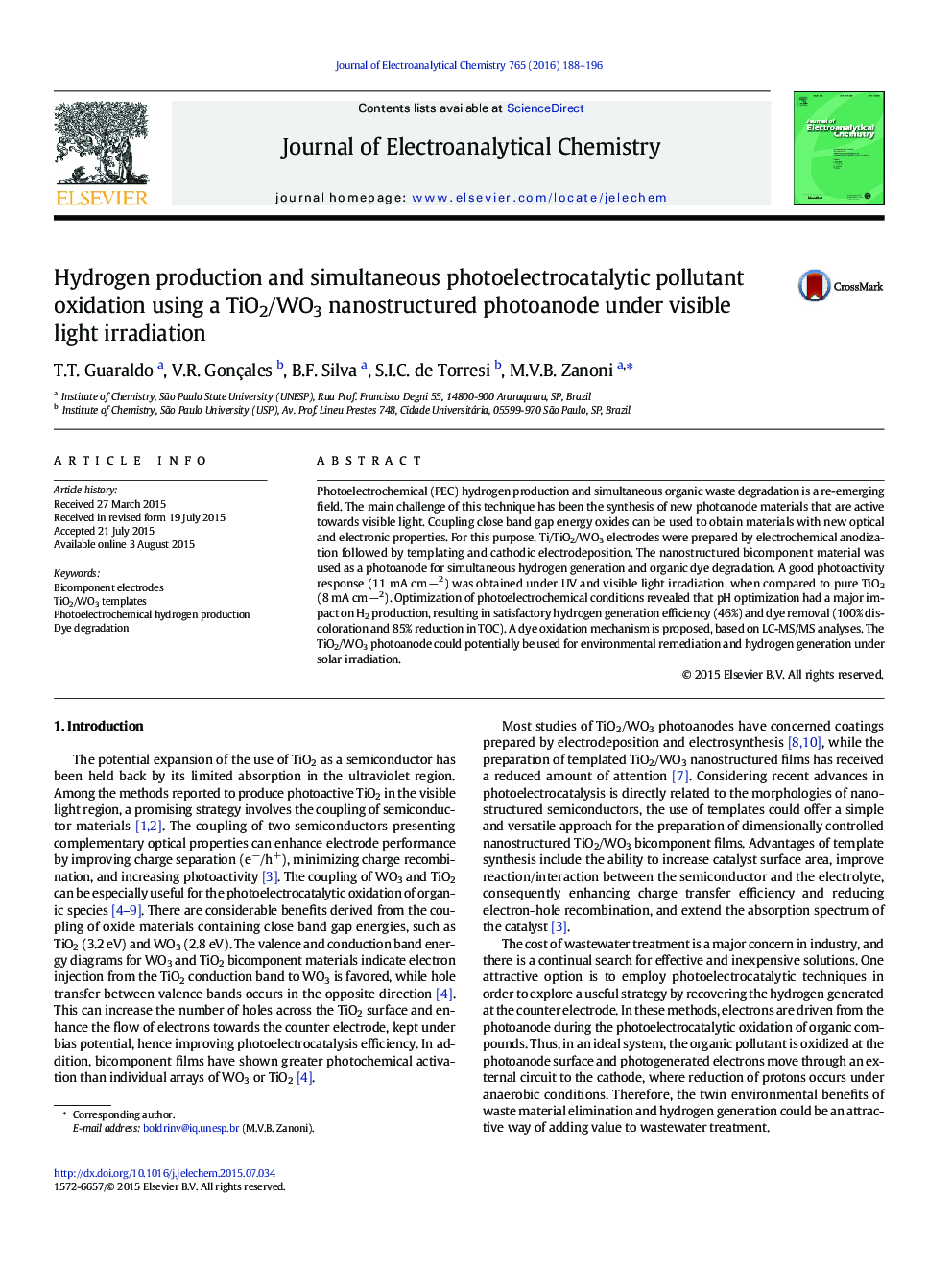| Article ID | Journal | Published Year | Pages | File Type |
|---|---|---|---|---|
| 218051 | Journal of Electroanalytical Chemistry | 2016 | 9 Pages |
•Nanostructured TiO2/WO3 bicomponent electrode•Simultaneous hydrogen production and pollutant degradation•Proposed degradation pathway for RB5 dye photoelectrocatalytic oxidation
Photoelectrochemical (PEC) hydrogen production and simultaneous organic waste degradation is a re-emerging field. The main challenge of this technique has been the synthesis of new photoanode materials that are active towards visible light. Coupling close band gap energy oxides can be used to obtain materials with new optical and electronic properties. For this purpose, Ti/TiO2/WO3 electrodes were prepared by electrochemical anodization followed by templating and cathodic electrodeposition. The nanostructured bicomponent material was used as a photoanode for simultaneous hydrogen generation and organic dye degradation. A good photoactivity response (11 mA cm −2) was obtained under UV and visible light irradiation, when compared to pure TiO2 (8 mA cm −2). Optimization of photoelectrochemical conditions revealed that pH optimization had a major impact on H2 production, resulting in satisfactory hydrogen generation efficiency (46%) and dye removal (100% discoloration and 85% reduction in TOC). A dye oxidation mechanism is proposed, based on LC-MS/MS analyses. The TiO2/WO3 photoanode could potentially be used for environmental remediation and hydrogen generation under solar irradiation.
Graphical abstractFigure optionsDownload full-size imageDownload as PowerPoint slide
